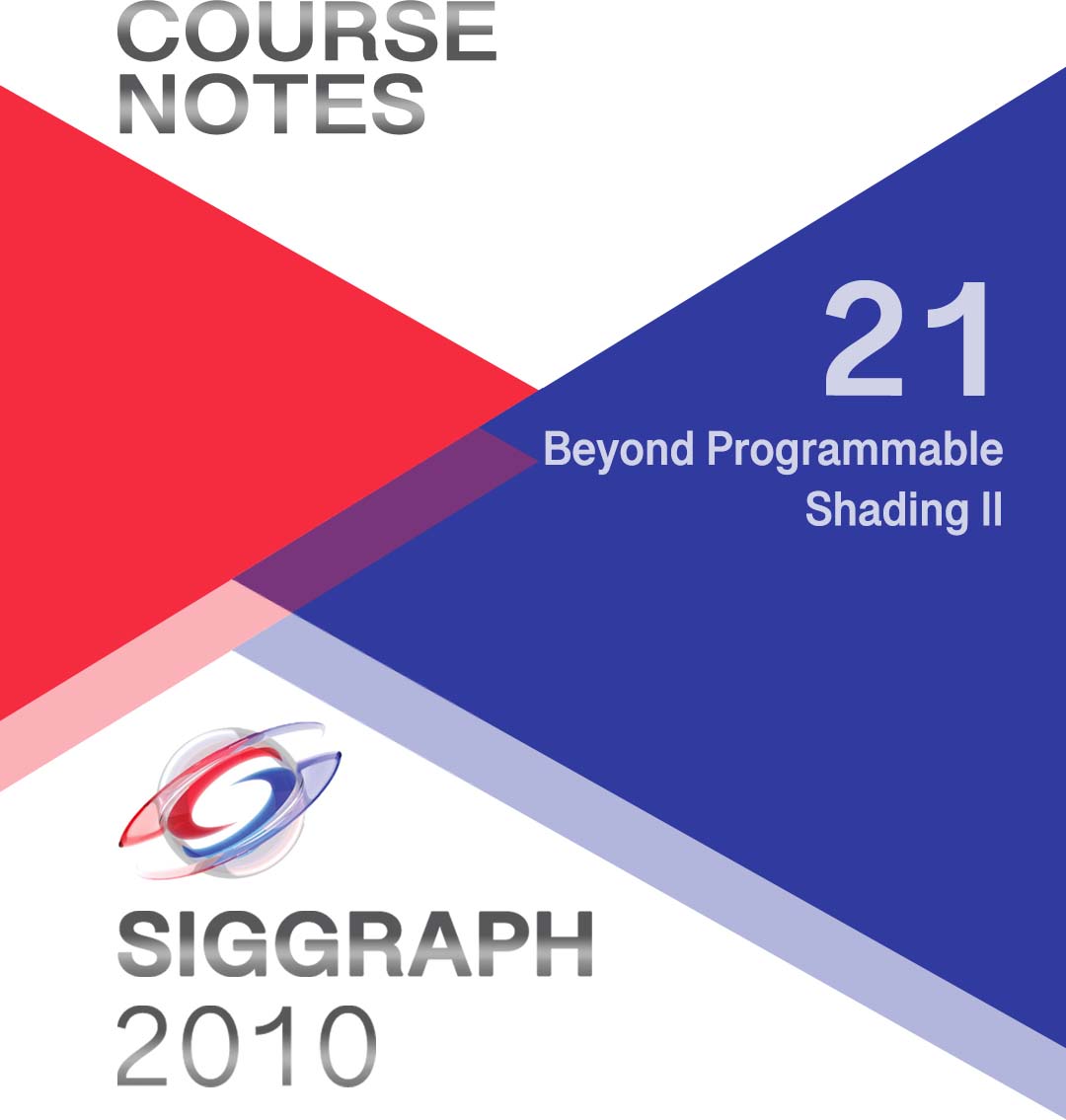“Beyond Programmable Shading II” by Lefohn, Houston, Luebke, Fatahalian, Foley, et al. …
Conference:
Type(s):
Entry Number: 21
Title:
- Beyond Programmable Shading II
Course Organizer(s):
Presenter(s)/Author(s):
Abstract:
Description
There are strong indications that the future of interactive graphics programming is a more flexible model than today’s OpenGL and Direct3D pipelines. So graphics developers need to have a basic understanding of how to combine emerging parallel programming techniques and more flexible graphics processors with the traditional interactive rendering pipeline. This course presents the state of the art in combining traditional rendering API usage with advanced task- and data-parallel computation to increase the image quality of interactive graphics. Leaders from graphics hardware vendors, game development, and academic research present case studies that show how general parallel computation is being combined with the traditional graphics pipeline to boost image quality and spur new graphics algorithm innovation. Each case study discusses the mix of parallel programming constructs used, details of the graphics algorithm, and how the rendering pipeline and computation interact to achieve the technical goals. The focus is on demonstrating what can currently be done, showing how it is done, and pointing out near-future trends. Topics include volumetric and hair lighting, alternative rendering pipelines including ray tracing and micropolygon rendering, in-frame data structure construction, complex image processing, and the future of graphics programming models.




